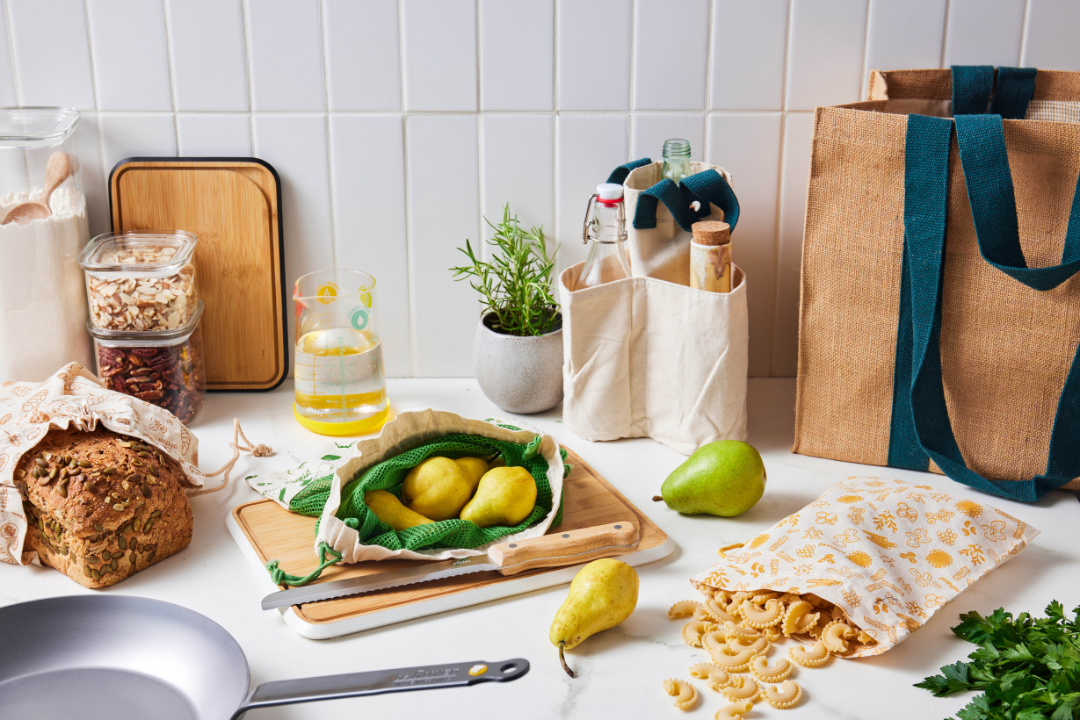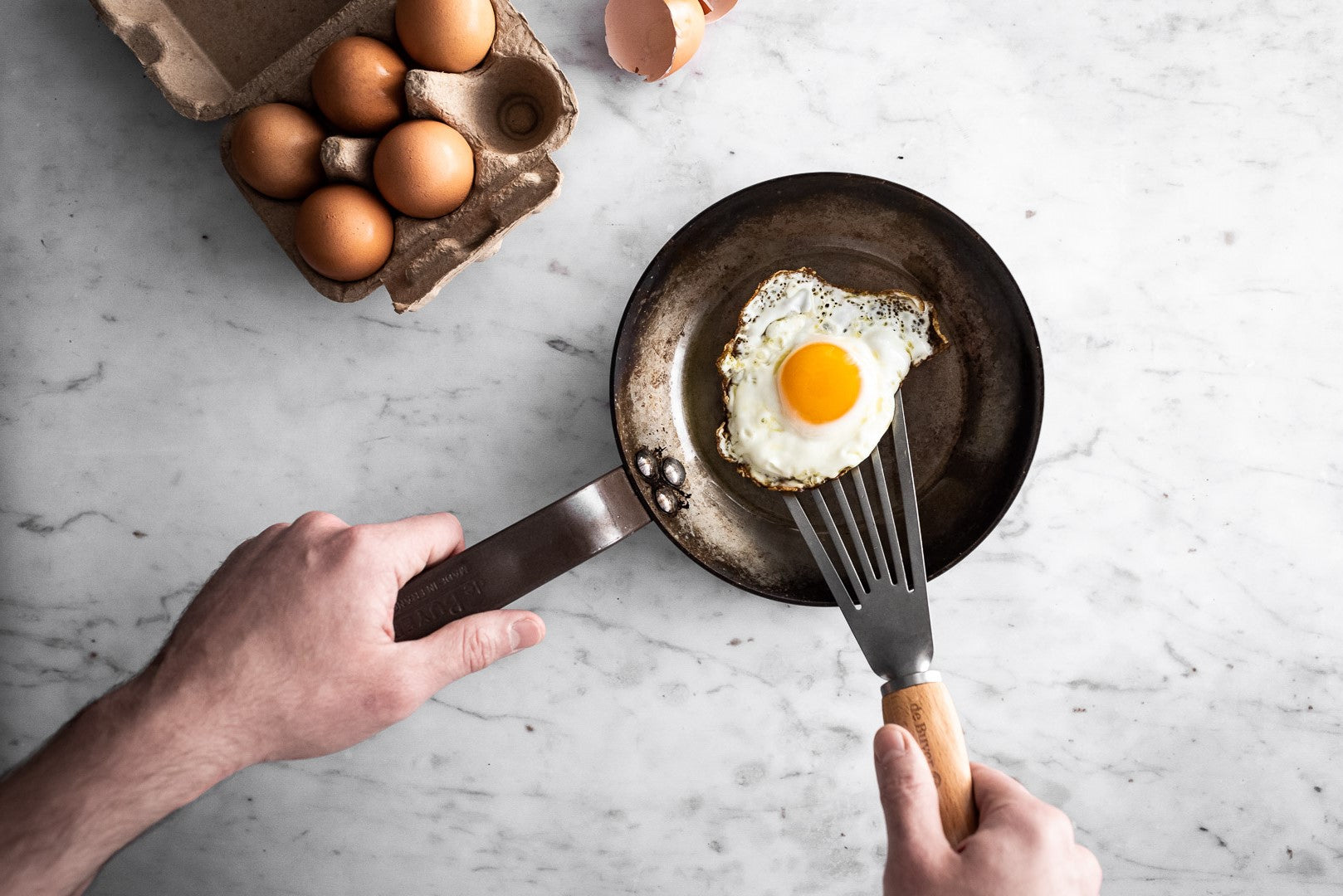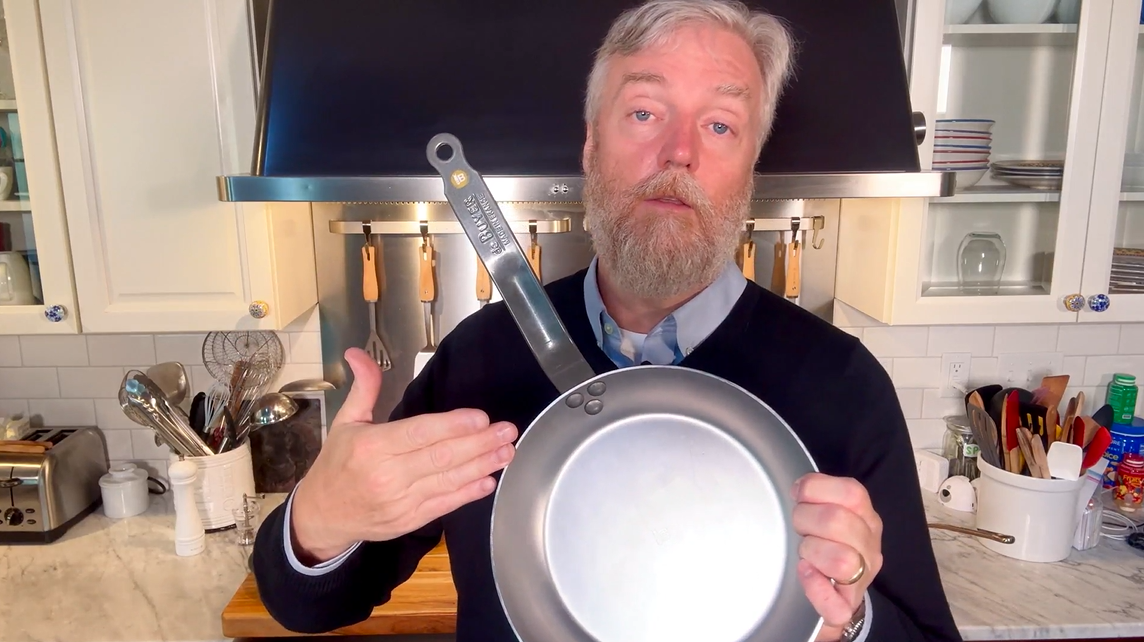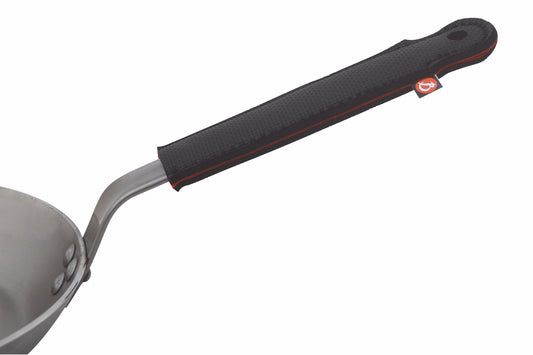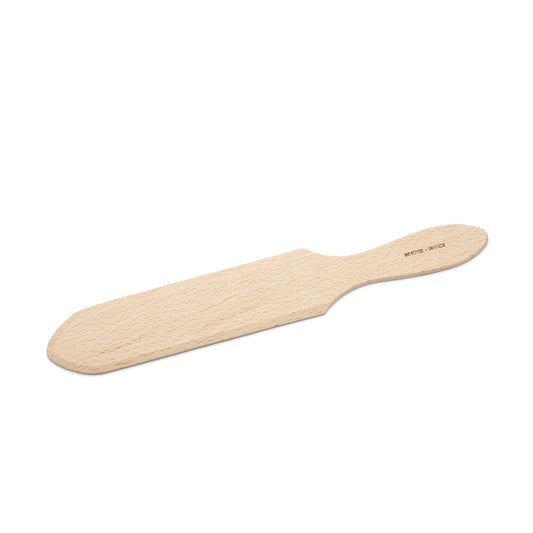What to Know about Stainless Steel vs Hard Anodized
Compare anodized aluminum vs stainless steel cookware to choose the best material for your kitchen. Learn key pros, cons, safety, and durability tips.
de Buyer
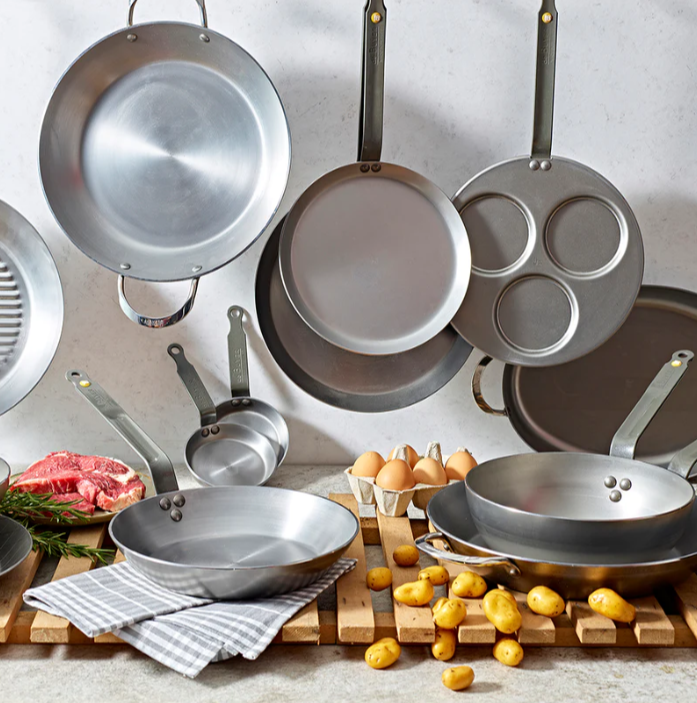
Key Takeaways
- Hard-anodized aluminum heats quickly and evenly but typically comes with a nonstick coating that can wear down over time.
- Stainless steel is non-reactive, extremely durable, and ideal for browning, deglazing, and high-heat cooking—but it requires proper technique to prevent sticking.
- While hard-anodized cookware offers convenience and affordability, it requires more delicate care to preserve its nonstick surface and avoid exposing the reactive aluminum core.
- Stainless steel has a higher upfront cost, but with proper maintenance, it delivers decades of performance, making it a long-term investment for serious cooks.
Picking the suitable material for your cookware sets the foundation for your cooking experience. The material you cook on can influence the taste, safety, and efficiency of your cooking. In the world of gourmet cuisine, two materials are particularly popular: stainless steel and hard-anodized aluminum.
Each has a unique attribute set, great for diverse cooking styles and preferences. Whether you're a professional chef or a home cook, understanding the differences between stainless steel and hard-anodized aluminum will help you make an informed decision about which material to use. And if the quality is at the front of your mind, de Buyer's offerings are worth considering.
What is Hard-Anodized Aluminum Cookware?
Hard-anodized cookware is made from aluminium that has been electrochemically treated—meaning a current has passed through it—to form a hard, non-reactive surface. Most hard-anodized pans are coated with PTFE or ceramic-based nonstick coatings, which can wear out over time.
-
Pros
- Lightweight and easy to handle
- Nonstick surface (at first)
-
Cons
- Can degrade with high-heat use
- Not as long-lasting as stainless
What is Stainless Steel Cookware?
Stainless steel cookware is either made entirely from stainless steel or made from a combination of stainless steel, chromium, and nickel.
de Buyer’s 5-ply stainless steel cookware is crafted entirely from stainless steel, while the 3-ply cookware is made from 18/10 stainless steel, which includes 18% chromium and 10% nickel.
-
Pros
- High heat tolerance
- Great for browning, deglazing, and sauce work
- Long-lasting and non-reactive
-
Cons
- Slight learning curve for stick prevention
Anodized Aluminum vs. Stainless Steel Cookware
Explore the differences between anodized aluminum and stainless steel, including their safety features, heat conductivity, nonstick coating, durability, maintenance, and cost analysis.
Safety Features
Safety in the kitchen extends beyond hot stovetops and sharp knives; the materials used to make your cookware also play a pivotal role. Picking non-reactive cookware helps ensure your meal doesn't have unwanted chemical reactions.
Stainless Steel
One of the great features of stainless steel is its natural non-reactivity. This ensures that when you cook, it prevents unwanted chemicals from leaching into your food.
Along with its safety from a chemical standpoint, stainless steel is built to withstand high temperatures, making it a sturdy companion for frying, searing, and high-heat cooking techniques.
Hard-Anodized
Hard anodizing takes standard aluminum, which has a reputation for being reactive, and transforms it into a safer cooking surface. However, if the surface sustains damage or gets scratched, it can expose the aluminum core, which has reactive properties with certain foods.
Heat Conductivity
Even heat distribution with your cookware is essential for achieving consistent results. The cookware's material significantly affects how evenly and efficiently heat is conducted, impacting the outcome of your dish.
Stainless Steel
Stainless steel is aesthetically appealing and durable, typically offering moderate heat conductivity. Recognizing this limitation, many companies enhance their capabilities by creating a clad or layered bottom with more conductive materials like copper. Not only does this layering technique minimize your chances of burning your food, but it also improves the overall heat distribution.
Hard-Anodized
On the other hand, hard-anodized aluminum is popular due to its superior heat conductivity. This material is excellent for uniformly distributing heat across the cooking surface, ensuring that your dish heats and cooks evenly. Another bonus is the reduction of hot spots, known for causing food to burn and stick, making your cooking experience more predictable and smoother.
Nonstick Coating
When browsing the cookware aisle, one of the top features many people look for is nonstick properties. It can impact the ease of your cooking process and influence post-cooking cleanup.
Stainless Steel
Stainless steel doesn't naturally have a nonstick surface, but there are ways to achieve some nonstick cooking with it. A well-seasoned pan or the proper cooking techniques can make your stainless steel relatively nonstick.
Another advantage is its resilience; stainless steel can withstand the use of metal utensils without scratching.
Hard-Anodized
Hard-anodized cookware typically features a nonstick coating. This feature simplifies both the cooking process and cleanup. However, you must be careful because hard-anodized surfaces can be susceptible to damage from metal utensils or abrasive cleaning agents, which might damage the finish.
Durability
The longevity of cookware reflects its durability, and in the busy environment of a kitchen, resilience is crucial. Both stainless steel and hard-anodized materials have strengths in terms of durability, which we'll discuss below.
Stainless Steel
Stainless steel has a reputation for being very robust due to its high resistance to denting, scratching, and warping. These qualities make it a popular pick for anyone who needs long-lasting cookware. With proper care, stainless steel can become a lovely heirloom you pass down through generations.
Hard-Anodized
Hard-anodized cookware is also renowned for its durability, boasting impressively strong properties due to its hardness, which is twice that of stainless steel.
However, the surface can degrade over time, mainly if you use abrasive cleaning methods or metal utensils. Carefully handling them can ensure that they stay a kitchen staple for years.
Maintenance
Beyond the allure of any cookware set is the often essential but overlooked aspect of maintenance. How you care for your cooking tools determines how long they last and how they perform each time you use them.
Stainless Steel
Stainless steel stands out for its durability, but it requires a bit of care to maintain its performance and luster. Seasoning it periodically is recommended, especially if you want to keep the semi-nonstick qualities. However, one of the standout traits is its resistance to staining and rust, ensuring it stays looking nice with minimal effort on your part.
Hard-Anodized
The maintenance of hard-anodized cookware is more nuanced because it has a unique surface that requires careful cleaning to preserve and protect its integrity. A critical point to remember is that these are usually not dishwasher-friendly. To prevent degradation and ensure longevity, gently hand wash to clean.
Cost Analysis
The price tag is usually a decent indication of durability, quality, and overall performance. While upfront costs play a role in buying decisions, savvy buyers also consider the long-term investment potential of their cookware.
Stainless Steel
Stainless steel cookware usually comes with a higher price attached, which directly reflects the cookware's robust durability and longevity. Although the upfront investment may be higher, it offers years of dedicated service, often outlasting less durable cookware sets.
Hard-Anodized
Hard-anodized cookware is more budget-friendly. However, the prices can fluctuate based on brand reputation, quality, and additional features. Striking the balance between affordability and quality is essential to ensure you're getting great value for your money.
Which One Should You Choose?
Choosing between hard-anodized aluminum and stainless steel cookware ultimately comes down to how you cook, what you value most in the kitchen, and how much time you’re willing to invest in care and technique.
-
Choose hard-anodized if:
- You want lightweight, easy-to-handle pans that heat quickly and cook evenly
- You're looking for a low-maintenance, mostly nonstick surface that simplifies cleanup
- You primarily cook everyday meals like eggs, sautéed vegetables, and quick proteins
- You prefer cookware that requires little technical skill or attention to detail
- Budget-friendliness is a key factor in your decision
-
Choose stainless steel if:
- You want high-performance, professional-grade cookware that can handle a wide range of techniques
- You’re interested in learning or refining skills like searing, deglazing, and building pan sauces
- You prefer cookware that’s free of coatings and built to last for decades
- You’re willing to invest time in learning how to use and maintain it properly
- You value durability, versatility, and a more sustainable, long-term solution
Still can’t decide?
There’s room in most kitchens for both. Many cooks use hard-anodized pans for quick and easy meals, reserving stainless steel for recipes that demand technique and precise temperature control. Start with the material that matches your current skill set and cooking style—and grow from there.
Cooking Is Better With the Right Tool
In stainless steel. In the debate over hard-anodized vs. stainless steel, each material offers unique strengths and nuances, such as the resilience of stainless steel or the heat distribution properties of hard-anodized.
As a company that sets the bar high, de Buyer continually raises the bar by creating unparalleled cookware in a variety of materials.
Explore de Buyer’s stainless steel collections, built for chefs and home cooks who value performance, longevity, and precision.
Learn More
Recommended for You
-
MINERAL B PRO Carbon Steel Fry Pan
Regular price $100.00Regular priceUnit price / per$0.00Sale price $100.00 -
MINERAL B Classic Carbon Steel Fry Pan
Regular price $65.00Regular priceUnit price / per -
MINERAL B Carbon Steel Omelette Pan
Regular price $75.00Regular priceUnit price / per -
MINERAL B PRO Carbon Steel Omelette Pan
Regular price $120.00Regular priceUnit price / per -
Protective Sleeve for Pan Handle
Regular price $9.95Regular priceUnit price / per -
MINERAL B Carbon Steel Crepe & Tortilla Pan
Regular price $65.00Regular priceUnit price / per -
Blue Carbon Steel Fry Pan
Regular price $50.00Regular priceUnit price / per -
Blue Carbon Steel Crepe & Tortilla Pan
Regular price $25.00Regular priceUnit price / per -
MINERAL B Carbon Steel Country Fry Pan
Regular price $110.00Regular priceUnit price / per -
MINERAL B Carbon Steel Egg & Pancake Pan
Regular price $40.00Regular priceUnit price / per -
Blue Carbon Steel Rectangular Baking Sheet
Regular price $40.00Regular priceUnit price / per -
B BOIS Crepe Spatula
Regular price $8.00Regular priceUnit price / per
